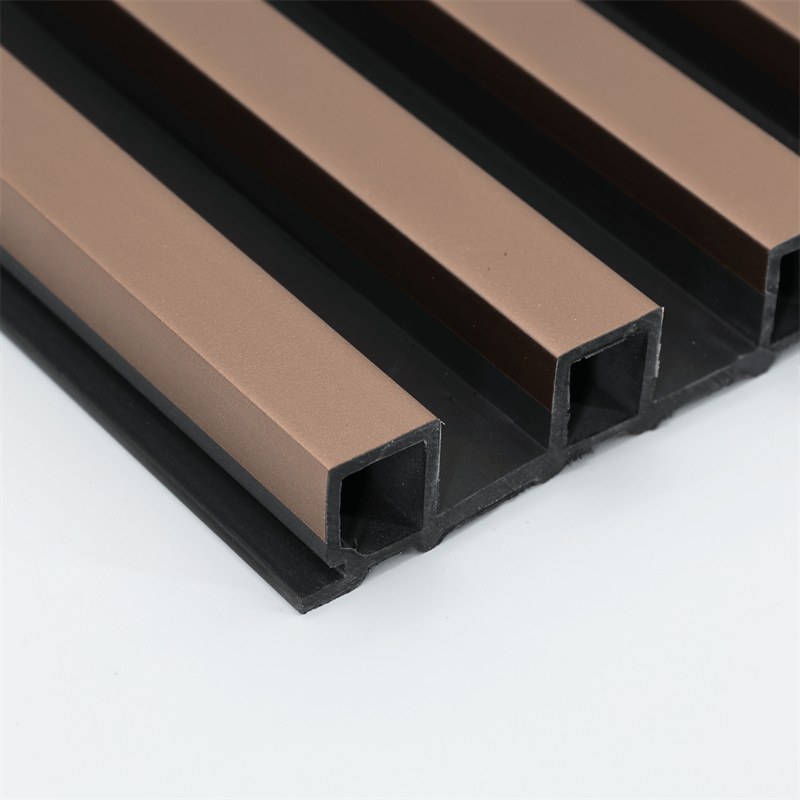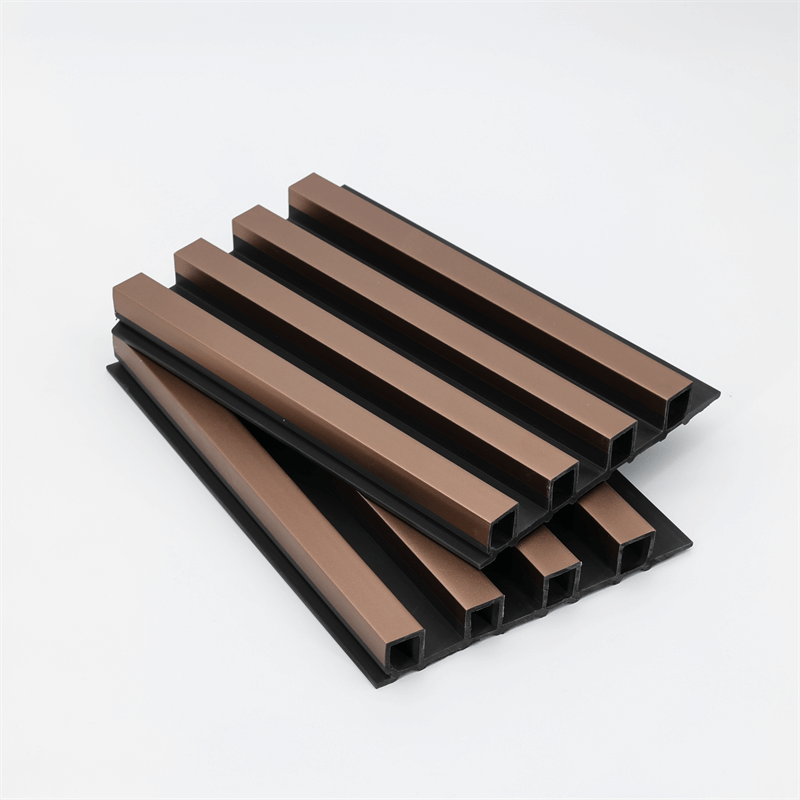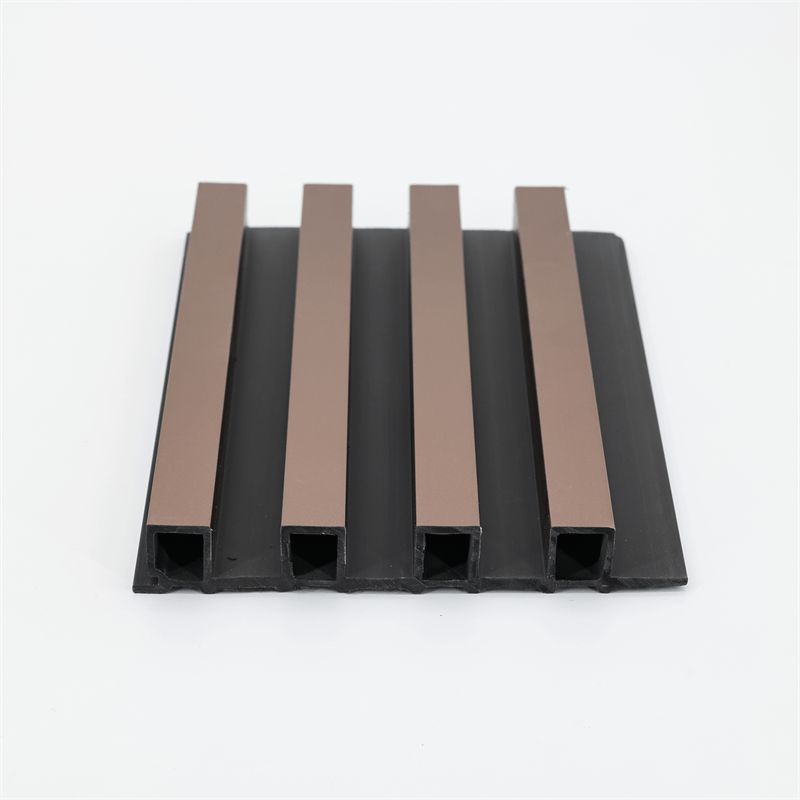Moisture-prone areas, such as bathrooms, kitchens, and basements, present unique challenges when it comes to selecting suitable wall materials.
Traditional materials, such as wood or gypsum, are often susceptible to water damage, mold growth, and decay in these environments.
Wood-plastic composite (WPC) wall panels offer an ideal solution for moisture-prone areas, providing a balance of aesthetics, durability, and moisture resistance.
This essay explores the advantages of using WPC wall panels in moisture-prone areas, examining their composition, moisture resistance properties, maintenance requirements, and long-term performance.
I. Composition and Moisture Resistance
Understanding the composition of WPC wall panels is essential to evaluating their suitability for moisture-prone areas.
WPC panels are typically composed of a blend of wood fibers or flour and thermoplastic polymers, such as polyethylene or polypropylene.
This combination creates a material that is inherently resistant to moisture, making it ideal for environments where water exposure is a concern.
The wood fibers or flour in WPC panels are encapsulated within the thermoplastic matrix, acting as a barrier against moisture absorption.
This prevents the panels from swelling, warping, or rotting when exposed to water or high humidity.
The moisture resistance properties of WPC panels make them highly suitable for areas where water splashes, condensation, or occasional spills may occur.
II. Durability and Performance
Moisture-prone areas require wall materials that can withstand the challenges posed by water exposure and high humidity.
WPC wall panels offer exceptional durability and performance in such environments, ensuring long-lasting structural integrity and aesthetics.
Unlike traditional materials that may deteriorate or become discolored when exposed to moisture, WPC panels maintain their appearance and strength over time.
The thermoplastic component of WPC panels provides resistance to moisture-related issues, such as rotting, decay, and fungal growth.
This durability makes WPC panels a reliable choice for areas that are prone to high levels of humidity or occasional water exposure.
III. Low Maintenance Requirements
In addition to their moisture resistance properties, the low maintenance requirements of WPC wall panels make them an attractive option for moisture-prone areas.
Traditional materials often require regular sealing, painting, or staining to protect them from moisture and maintain their appearance.
In contrast, WPC panels offer a hassle-free solution with minimal maintenance needs.
WPC panels are naturally resistant to stains, allowing for easy cleanup of spills or splashes.
Regular cleaning with mild soap and water is usually sufficient to keep the panels looking clean and fresh.
The low maintenance requirements of WPC panels save time, effort, and money associated with ongoing maintenance, making them a practical choice for busy homeowners or commercial spaces.
IV. Long-Term Performance and Sustainability
When considering wall materials for moisture-prone areas, long-term performance and sustainability are crucial factors.
WPC wall panels excel in both these aspects, making them an environmentally conscious choice.
The moisture resistance and durability of WPC panels contribute to their long-term performance.
Unlike some traditional materials that may deteriorate or require frequent replacements in moisture-prone areas, WPC panels maintain their structural integrity and aesthetics over an extended period.
This longevity translates to reduced waste generation and lower environmental impact over time.
Furthermore, the incorporation of recycled materials in the production of WPC panels adds to their sustainability.
By utilizing wood fibers or flour from post-consumer or post-industrial sources, WPC panels reduce the demand for virgin wood resources and minimize waste.
Additionally, the potential for recycling at the end of their lifespan further contributes to a circular economy and sustainable practices.
WPC wall panels offer an ideal solution for moisture-prone areas, providing a combination of aesthetics, durability, moisture resistance, and low maintenance requirements.
Their composition and inherent moisture resistance properties make them well-suited for environments where water exposure or high humidity levels are a concern.
The durability and performance of WPC panels ensure long-lasting structural integrity and maintain their appearance over time.
Additionally, their low maintenance requirements save time, effort, and resources.
Moreover, the sustainability of WPC panels, with their incorporation of recycled materials and potential for recycling, aligns with environmental responsibility.
By choosing WPC wall panels for moisture-prone areas, homeowners and businesses can enjoy peace of mind knowing that their walls are protected against water damage, mold growth, and decay.
The combination of functionality, durability, and sustainability makes WPC panels an ideal choice for creating visually appealing and moisture-resistant spaces.

Furthermore, the use of WPC wall panels in moisture-prone areas offers practical benefits beyond their inherent moisture resistance.
These panels can contribute to the overall design and aesthetics of the space, enhancing its visual appeal and creating a cohesive look.
WPC panels come in a variety of colors, textures, and finishes, allowing for customization and flexibility in design.
Whether you prefer a contemporary, rustic, or traditional style, there are WPC panels available to suit your preferences.
The versatility of these panels enables them to seamlessly blend with different interior design themes and architectural styles, transforming moisture-prone areas into visually stunning spaces.
Moreover, WPC wall panels can be easily installed, saving time and effort during the construction or renovation process.
They are typically lightweight, making them easier to handle and transport. The panels can be easily cut, shaped, and installed using standard tools, reducing the need for specialized equipment or extensive labor.
In addition to their practical benefits, WPC wall panels also contribute to the overall comfort and ambiance of moisture-prone areas.
Their moisture resistance properties help maintain a stable indoor environment, reducing the risk of mold or mildew growth and the associated musty odors.
This creates a more pleasant and healthier living or working environment for occupants.
Furthermore, WPC panels offer sound insulation properties, reducing noise transmission and enhancing the acoustic comfort of the space.
This can be particularly beneficial in areas such as bathrooms or kitchens where water-related activities and appliances can generate noise.
The sound-absorbing qualities of WPC panels help create a quieter and more peaceful atmosphere, enhancing the overall comfort of the space.
In terms of sustainability, WPC wall panels offer several advantages. As mentioned earlier, the use of recycled materials in their production reduces the demand for virgin resources and helps minimize waste.
Additionally, the long lifespan and durability of WPC panels contribute to their sustainability by reducing the need for frequent replacements.
This not only saves resources but also reduces the environmental impact associated with the manufacturing and disposal of traditional wall materials.
In conclusion, WPC wall panels are an ideal solution for moisture-prone areas, providing a balance of aesthetics, durability, and moisture resistance.
Their composition and inherent properties make them highly suitable for environments where water exposure or high humidity levels are a concern.
The versatility and ease of installation of WPC panels, coupled with their sound insulation properties, contribute to the overall comfort and ambiance of moisture-prone spaces.
Moreover, the sustainability of WPC panels aligns with environmental responsibility, offering a sustainable choice for homeowners and businesses.
By choosing WPC wall panels, individuals can transform moisture-prone areas into functional, visually appealing, and environmentally conscious spaces.


